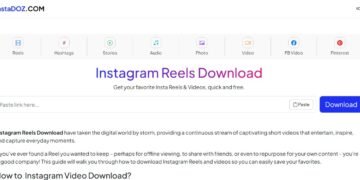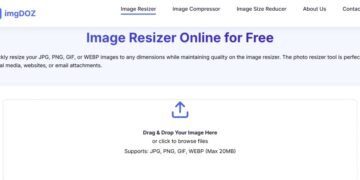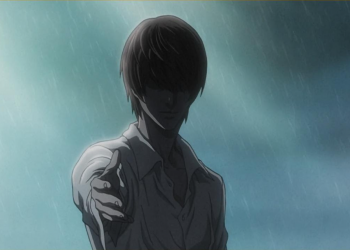NFT stands for non-fungible token!
That doesn’t make it any clearer.
Alright, I’m sorry. “Non-fungible” more or less means that it is unique and can’t be replaced with something else. For example, a bitcoin is fungible – trade one for an additional bitcoin, and you’ll get precisely the same thing. A single trading card, however, is non-fungible. If you trade it for another card, you’ll get something different.
A non-fungible token (NFT) is a non-exchangeable unit of data stored on a blockchain, a kind of digital ledger. NFT data drive types may be related to digital files like photos, videos, and audio. As each token is uniquely identifiable, NFTs differ from blockchain cryptocurrencies like Bitcoin.
NFT records claim to provide a public certificate of authenticity or proof of possession, however, the legal rights conveyed by an NFT can be unsure. NFTs do not restrict sharing or copying of the underlying digital files and do not prevent the creation of NFTs with identical files related to them.
NFTs have been used as a speculative investment and have drawn criticism for the energy cost and carbon footprint associated with validating blockchain transactions, similarly to their frequent use in art fraud.
How do NFTs work?
At an extremely high level, most NFTs are a part of the Ethereum blockchain. Ethereum is a cryptocurrency, like bitcoin or dogecoin, however, its blockchain also supports these NFTs, which store additional information that makes it different from, say, an ETH coin. It is worth noting that other blockchains may apply their versions of NFTs.
What is worth buying at the NFT Supermarket?
NFTs really can be anything digital (like drawings, music, your brain drained, and turned into an AI), however, a lot of the current excitement is about using the tech to sell digital art.
What is the factor of NFTs?
It relies upon whether you’re an artist or a buyer.
I’m an artist.
First off: I’m proud of you. Way to go. You are probably interested in NFTs as it offers you a way to promote paintings that there is any other case won’t be lots of a marketplace for. If you come up with a cool digital sticker idea, what would you do? Sell it on the iMessage App Store? No way.
In addition, NFTs have a function that you can enable that will pay you a share whenever the NFT is sold or changes hands, ensuring that if your work becomes super popular and balloons in value, you’ll see a part of that benefit.
I’m a buyer.
One of the apparent advantages of purchasing artwork is it helps you to financially aid artists you like, and that’s actual with NFTs (which are way trendier than, like, Telegram stickers). Buying an NFT also typically receives you a few primary utilization rights, like being capable of submitting the photo online or setting it as your profile image. Plus, of course, there are bragging rights in which you personalize the artwork, with blockchain access to back it up.
No, I mean I’m a collector.
Ah, okay, yes. NFTs can work like every alternative speculative asset, wherever you buy it and hope that the worth of it goes up in the future, thus you will be able to sell it for a profit. I feel quite dirty for talking regarding that, though.
So, is each NFT unique?
In the boring, technical sense each NFT may be a distinctive token on the blockchain. But while it could be like a van Gogh, where there’s only one real definitive version, it could also be like a trading card, where there are 50 or hundreds of copies of the same artwork.
Commonly associated files.
NFTs were used as a means of exchanging digital tokens linked to a digital file. Ownership of an NFT often comes with a license to use the underlying digital asset, but usually does not confer copyright on the purchaser. Some agreements only grant a license for personal, non-commercial use, while other licenses also permit the commercial use of the underlying digital asset.
The digital art may be a common use case for NFTs. High-profile digital art auctions as NFT have received considerable public attention, with artist Pak’s work “Merge” being the most expensive NFT priced at $91.8 million and every day’s the First 5000 Days, by artist Mike Winkelmann (known professionally as Beeple), the second most expensive auction at $69.3 million in 2021.
Some NFT collections, including EtherRocks and CryptoPunks, are examples of generative art, where many different images can be created by assembling a selection of simple image components in different combinations.
In March 2021, the blockchain company Injective Protocol purchased an original $95k screen print titled Morons (White) by British graffiti artist Banksy and filmed someone burning it with a lighter, with the video being invented and sold as the name of NFT. The person who destroyed the artwork, who went by the name “Burnt Banksy”, described the act as a way to transfer a physical artwork into NFT space.
NFTs may be used to symbolize in-game assets, consisting of digital plots of land, which a few commentators describe as being controlled “with the aid of using the user” in place of the game developer with the aid of using permitting assets to be traded on third-celebration marketplaces without permission from the game developer.
In Feb 2021, NFTs reportedly generated around $25 million at intervals in the music industry, with artists’ commercial design and music as NFT tokens. On Feb 28, 2021, electronic dance musician 3LAU sold a set of thirty-three NFTs for a total of $11.7 million to commemorate the third anniversary of his Ultraviolet album. On March 3, 2021, an NFT was created to push the Kings of Leon album, “When You See Yourself”.
Some Issues.
NFTs involving digital art typically do not store the associated art file on the blockchain due to its size. The token functions are more like a certificate of ownership, with a web address pointing to the work in question, making the artwork still prone to link rot. Because NFTs are functionally different from the underlying artwork, anyone can easily save a copy of an NFT’s image, usually by right-clicking. NFT supporters vilify this duplication of NFT artwork as a “right-click mentality”, with one collector quoted by Vice comparing the value of a purchased NFT to that of a status symbol “to show off that they can afford to pay that much”.










